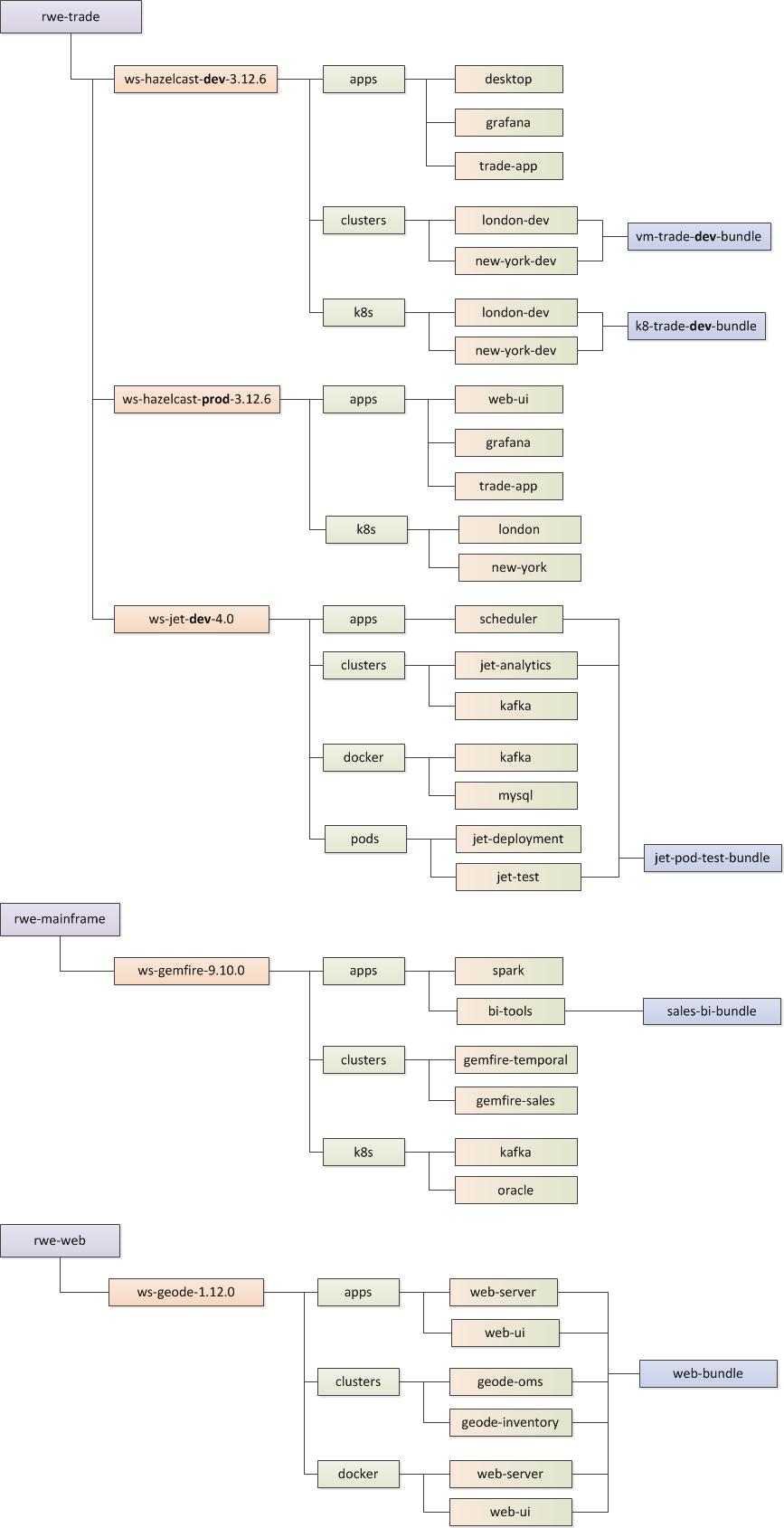Introduction - padogrid/padogrid GitHub Wiki
◀️ Quick Start :link: Bundle Catalogs ▶️
PadoGrid greatly simplifies your data grid environments by allowing you to create workspaces on just about any hardware with Linux/Unix, macOS or Windows OS installed. You can think of a workspace as a sandbox in which you can safely make changes to data grid clusters and apps without affecting other workspaces. A workspace may have one or more clusters and apps that are separately configured and readily activated. You can have any number of workspaces, each with different versions of data grid products and apps, running different use cases with tailored configurations to run on your laptop, remote VMs, Kubernetes and Docker clusters. You can, for example, create a workspace that federates multiple data grid clusters serving inventory and sales data, a workspace that handles streamed data into the federated clusters via one or more Apache Spark or Hazelcast Jet clusters, and yet another workspace that integrates data analytics tools for performing AI/ML operations. PadoGrid achieves this by orchestrating the top-level workspaces directories called Root Workspaces Environments (RWEs). An RWE contains distinct workspaces and a workspace contains clusters and apps pertaining to a specific data grid version.
PadoGrid consolidates your workspaces into a single operations center. You can switch between workspaces and clusters on the fly, check their status in short or long descriptions, shutdown a cluster or all the clusters in a workspace with a single command, and create workspace snapshots in the form of bundles which you can share with other users. You can create and deploy a bundle that contains a readily runnable workspace that has been tested and integrated with third party applications. You can also capture your current cloud environment in a bundle and reinstate the exact image in the cloud later. Bundles can contain your workspace environment, applications, versioned clusters, development/QA/production configurations, full-blown use cases, demoware, test suites, monitoring tools, and etc.
PadoGrid provides online bundles that are readily available for installation. You can list them by running the show_bundle command and install them by running the install_bundle -download command. If you prefer the browser to view the bundles, then run the show_bundle -catalog command, which provides a collection of bundle architecture diagrams with links to their documents. These bundles range from simple tutorials to fully implemented use cases providing out-of-the-box enterprise solutions to complex data integration problems. You can also offer your own bundles by adding them to the PadoGrid catalog service.
The RWE tree hierarchy example shown below demonstrates how workspaces can be configured to integrate, manage, and run various products and applications including bundle formations. Navigating the RWE hierarchy is made easy with the switch commands which allow you to jump from workspace to workspace and cluster to cluster. Whether you want to zero in on a single cluster member or federate hundreds of clusters, with PadoGrid's comprehensive set of lifecycle management commands, your use case is just a single command away.

◀️ Quick Start :link: Bundle Catalogs ▶️